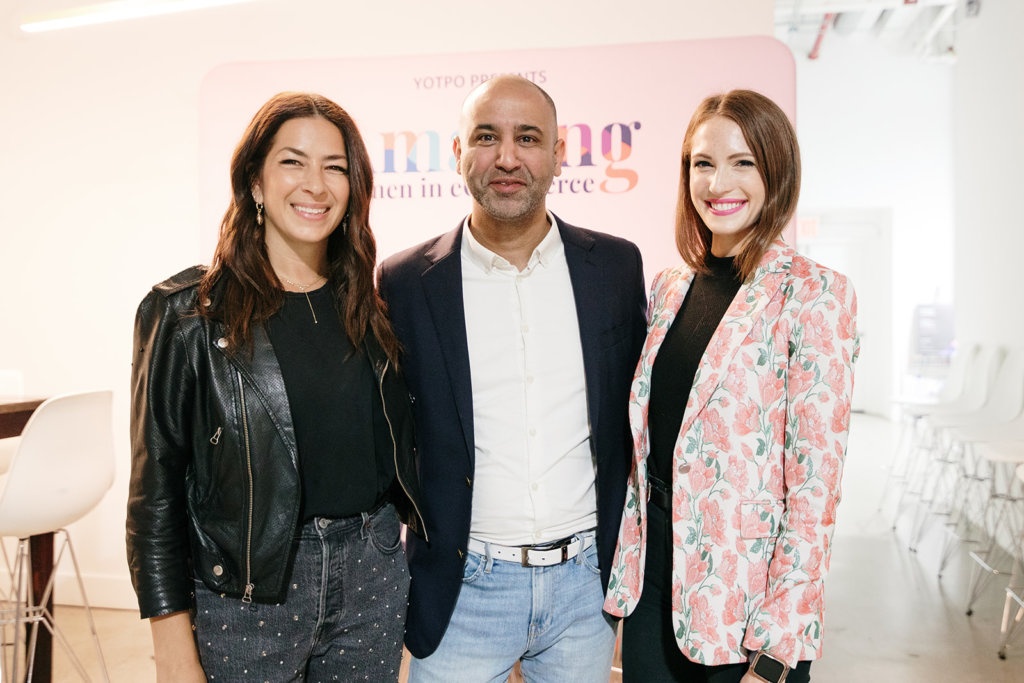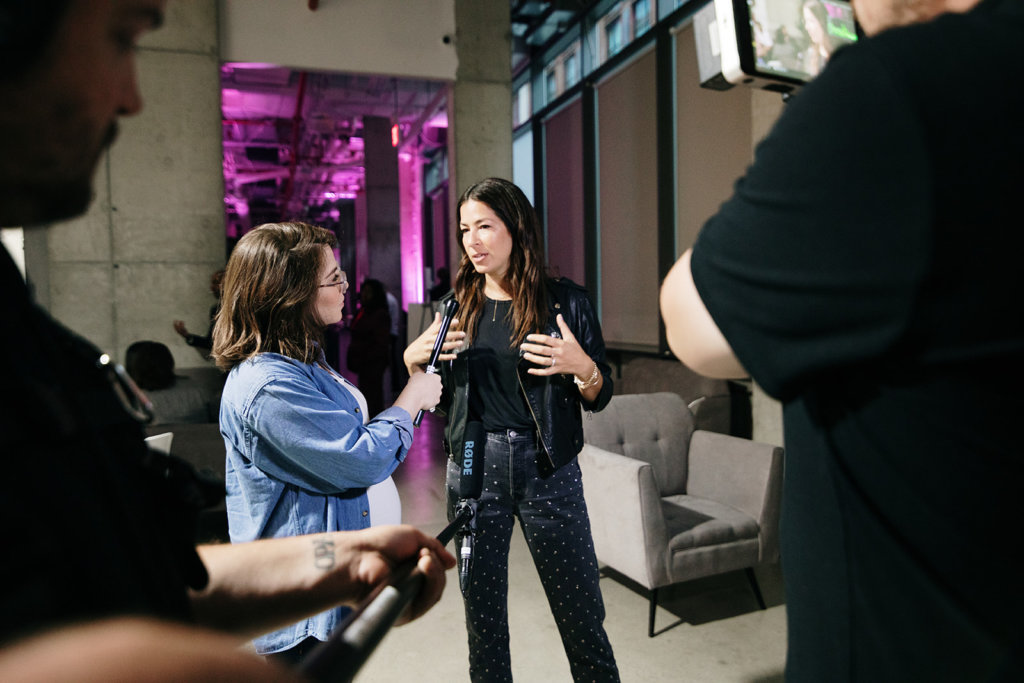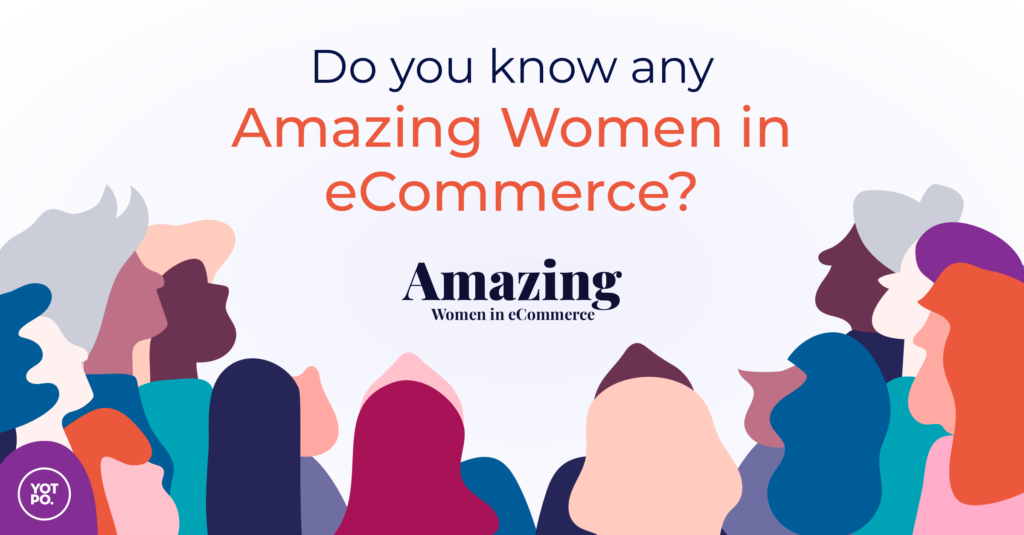Fashion industry veteran Rebecca Minkoff burst onto the scene in the early 2000s. Minkoff designed the “Morning After Bag” in 2005, which captured the attention of fashion enthusiasts everywhere, and officially made her a household name.
Today, Rebecca Minkoff is distributed in over 900 stores worldwide, including four domestic retail stores and eight international locations. The brand also sells direct-to-consumer from their website, which accounts for a third of their business.
It’s been a tumultuous decade in the fashion industry, but Minkoff has been navigating it with tact — sometimes by making data-informed decisions, other times by going with her gut. This “part science, part art” approach has enabled the company to embrace D2C while maintaining a robust relationship with wholesale partners; to build out several Rebecca Minkoff communities while staying true to brand voice; and more.
Vogue Business Features Editor Hilary Milnes sat down with Minkoff at Yotpo’s Destination: D2C on September 12, to discuss lessons learned over a 15+-year-long career in the fashion industry.
Navigating D2C and wholesale
As a company with historically strong wholesale relationships, Minkoff saw the potential for D2C to inform and bolster wholesale strategy and visa-versa early on. “We view our wholesale partners as true partners. We give them every piece of data we have on our customers. It’s teach-and-learn on both sides,” she explained.
Minkoff cited the brand’s decision to launch “Shop the Runway” in 2016 as a perfect example of this mutually beneficial relationship. This “D2C strategy for the runway,” allows customers to bypass third-parties — in this case, the buyers — and buy new styles directly from the brand.
For Minkoff, however, it was essential that “Shop the Runway” ran alongside the traditional fashion calendar. The company still holds shows where they sell to buyers and buy for their own retail stores, as well as press previews, where influential figures in the fashion industry get access to a new collection before it goes public. Minkoff takes careful note of what the buyers and press preview attendees select, then uses that data to inform her D2C strategy.
“Three-to-six months before we launch a product in wholesale, we’ll make about 100, put them up in black, and see what happens: no marketing behind it, no nothing,” explained Minkoff. “And we know if the customer goes and discovers it, there’s something behind that bag.”
The company will then pass that information along to their wholesale partners, letting them know that it’s a worthwhile investment. This relationship can also go the other way: a wholesaler will let Minkoff know that a piece that they purchased did very well, so the brand can restock, and offer it directly from their site.

From left: Rebecca Minkoff, Raj Nijjer (VP Marketing, Yotpo), and Hilary Milnes
Beyond sales: RM communities
For Minkoff, moving into D2C has been about more than data: it’s enabled her to connect with customers on a level that goes beyond just selling a product. “If there’s a lift in sales, great, but the point isn’t for the lift. It’s to really make our customer feel like she’s getting a value beyond the product, and that we’re listening to her,” said Minkoff.
To that end, Minkoff has built out several different communities, each catering to the unique needs of different Rebecca Minkoff customers. The brand uses the #MyRM hashtag to showcase customer photos across site and social. #RMmusesIRL is where Rebecca Minkoff features aspirational women — not just models, Minkoff was quick to point out — but personalities, influencers, chefs, hosts of TV shows, and so on. Many of these women are then featured on Minkoff’s podcast, Superwomen.
Finally, there’s Minkoff’s Female Founder Collective, a community of over 5,000 female founders empowering and supporting one another, through workshops, conferences, and other myriad events both on and offline.
The thread running through all Rebecca Minkoff communities is a commitment to authenticity. “The more real the better, the less polished the better,” said Minkoff. “We’ve deleted most editorial content from our social because she doesn’t engage with it or like it. I’m meeting her with what she wants to see, and it isn’t some perfectly curated image of a life that’s not real.”
What’s next for Rebecca Minkoff?
At Rebecca Minkoff’s Fall/Winter 2019 presentation at New York Fashion Week, Minkoff announced a capsule collection of extended sizing in partnership with Stitch Fix. According to Minkoff, customer data was a major driving factor in deciding to go ahead with an inclusive sizing collection.
“This has been a desire from our customer for a long time. As a company, you have to make extensive investments in order to make that world come to life. We didn’t want to do it and do it wrong … [we said] let’s find the right partner to make sure it’s a beautiful product.”
In addition to the new collection with Stitch Fix, Minkoff will be launching a fragrance in 2020, as well as two completely new categories — under wraps, for now — all based on customer feedback.

Talia Shani (Director of Marketing, UK, Yotpo) and Rebecca Minkoff
The main takeaways
Following the data while also going with her gut has led Minkoff down a path less taken — and she’s thankful for it.
“Several years ago, we were told: don’t talk to your consumer,” Minkoff shared. “Don’t work with influencers. We had huge wholesalers threaten to pull out if we continued to talk to these people. All these times when you take risks and you can’t sleep at night … [my friend] pointed out where we had won, and it was all those times when we didn’t just take the path that was prescribed.”
“Try pushing it too far,” Minkoff concluded. “You only learn these things by massive failures.”
Know an Amazing Woman in eCommerce, like Rebecca Minkoff? Nominate her now!















 Join a free demo, personalized to fit your needs
Join a free demo, personalized to fit your needs